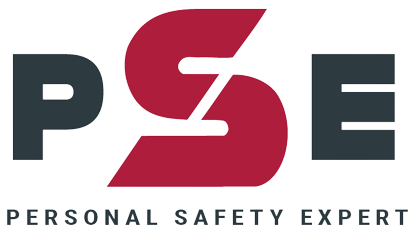May is National Bike Month, and while the country encourages cyclists – novices and experts alike – to hit the trail, the Personal Safety Expert wants to bring safety into the conversation. Why such a stress on safety? Well, “the number of Americans traveling to work by bicycle increased from 488,000 to about 786,000” between 2000 and 2012, which means there are many cyclists on the road.
From adults bicycling to work to adolescents getting out for some fresh air, all cyclists need to keep safety in mind during May and beyond. Here are nine quick tips to follow and share with others to help stay safe while cycling:
1. Be visible:
Wear bright clothes so that drivers can see you – anything neon is great during the daytime. It’s best to avoid biking at night, but if you do go for a ride after dark, be sure to wear reflective gear. When turning, be sure to signal to drivers and make eye contact when possible. Bike in a straight, predictable line so that you don’t take any drivers by surprise.
2. Hydrate:
If you’re going for a long ride or it’s hot out, you run the risk of dehydration. Drinks with sodium will help you retain water, so keep this in mind when you go for a ride longer than an hour or so or for a rid in extreme heat always keep a water bottle with you.
3. Check your bike:
Before you head out, check your tire pressure, and breaks to make sure everything’s in order. This way there’s less of a chance of some sort of malfunction that could jeopardize your safety.
4. Bring a personal safety tool:
It’s important to have a self-defense tool on hand in case you meet anyone that wants to do you hear. SABRE’s Cyclist Pepper Spray with Adjustable Bike Strap is a great option for adults, while the Personal Alarm with Key Ring can help children signal to others that there’s an emergency.
5. Prevent Theft:
Invest in a high-quality U-lock and secure your bike by the frame and wheel. Try to lock your bike in a well-lit, high-traffic area. Record your bike’s serial number and register it with your local police department, if possible, so that you can better recover it in the event of theft.
6. Wear a helmet:
Helmets can reduce the risk of head injury by up to 85%. Find out how to fit your helmet at www.helmetcheck.org.
7 . Control your bike:
It’s important to keep at least one hand on your handlebars. Be sure to give this message to kids and teens, who might be experimenting with riding with no hands. Carrying any items with you on your ride? Put them in a backpack or bike carrier; don’t try to carry in your hands.
8. Be on the lookout:
You might have heard to rid as far to the right as possible, but keep in mind that the doors of parked cars can be opened at any minute. Cyclists running into parked car doors is more common than you’d think, so drive a car door’s length from parked cars if possible. Also be on the lookout for moving cars, storm grates, potholes, or anything else that might upset your balance.
9. Know your place:
Adults should ride in the street and follow the same rules vehicles abide by – this means signal when you turn, stop at lights, and obey all other traffic laws. Always ride with, not against, traffic. Children under 10 should ride on the sidewalk.
